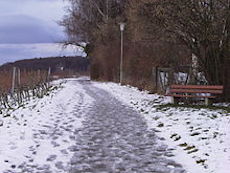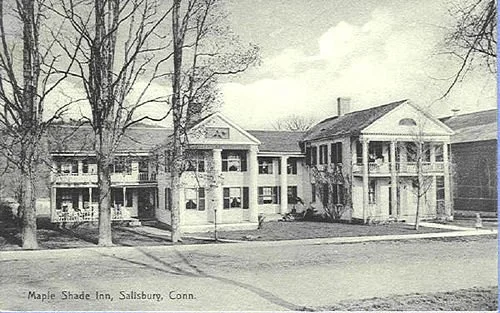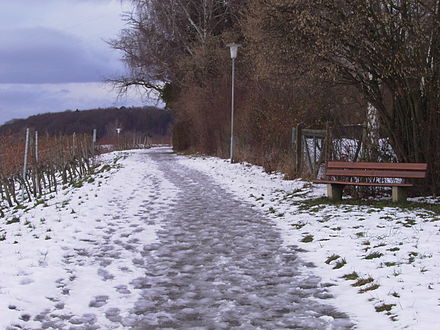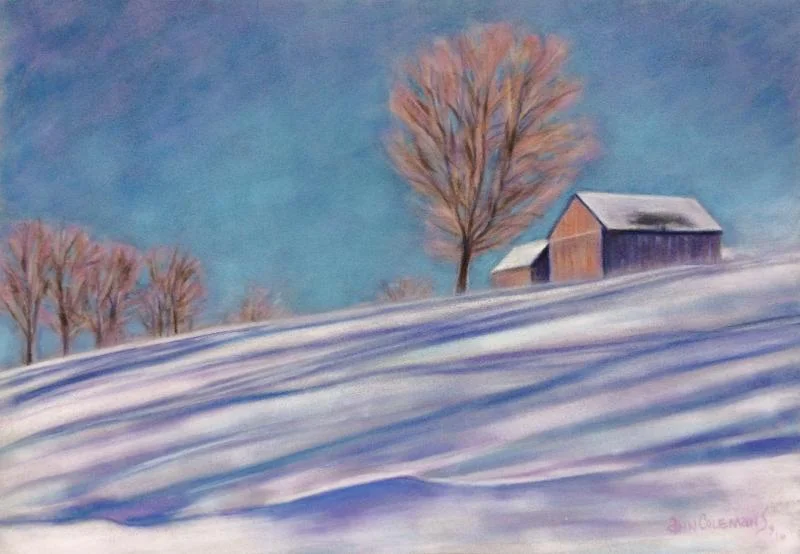
Bring it on
Vegetation can cause snow-melting heat.
— Photo by Wing-Chi Poon
“Recent research has demonstrated that the {January} thaw is a reality and most frequently occurs between Jan. 20 and Jan. 26….Though the thaw does not come every year, it has put in an appearance often enough to establish its place as a singular factor of the New England climate.’’
-- From “The New England Weather Book’’ (1976), by David Ludlum and the editors of Blair & Ketchum’s Country Journal (RIP)
“ There are two seasonal diversions that can ease the bite of any winter. One is the January thaw. The other is the seed catalogues.
—- Hal Borland (1900-1978), American nature writer. He spent most of his adult life living in Salisbury, Conn.
xxx
“My sense of time seems to be melting, like a kid's snowman in a January thaw.’’
— Stephen King (born 1947), Maine-based novelist
1908 postcard
Salisbury, Conn., in the Litchfield Hills, has long been a favorite weekend refuge.
The January thaw
Slush in January.
Adapted from Robert Whitcomb’s “Digital Diary,’’ in GoLocal24.com
January obviously sometimes has a bleak beauty, but….
When I lived in New Hampshire some of the locals, to sort of justify living in a place with a, well, rigorous climate, noted that you were much more likely to get sick down south, where the year-round warmth helps bacteria and viruses to thrive far more than in New England. It reminds me of my former colleague Sam Abt, who smoked a couple of packs of Pall Malls every day and yet who never seemed to get sick even as everyone around him was coughing and sniffling. “No bugs can live down there’’ (in his lungs), he asserted.
To me January is about slowly lifting darkness and taking people to hospitals on roads covered with black ice. So bring on the January thaw, the seed catalogs and the annual beach-pass dues.
The New England Weather Book, by David Ludlum and the editors of the now long-departed Blair & Ketchum’s Country Journal, wrote of the thaw: “{R}esearch has demonstrated that the thaw is a reality and most frequently occurs between January 20 and 26….Although the thaw does not come every year, it has put in an appearance often enough to establish its place as a singular factor of the New England climate.’’
Apparently our January thaw this year will come on Jan. 23-24, unfortunately with rain.
We’ll take it!
January thaw
Come with rain, O loud Southwester!
Bring the singer, bring the nester;
Give the buried flower a dream;
Make the settled snow-bank steam;
Find the brown beneath the white;
5
But whate’er you do to-night,
Bathe my window, make it flow,
Melt it as the ices go;
Melt the glass and leave the sticks
Like a hermit’s crucifix;
10
Burst into my narrow stall;
Swing the picture on the wall;
Run the rattling pages o’er;
Scatter poems on the floor;
Turn the poet out of door.
-- Robert Frost, "To the Thawing Wind''
But now slush-soaked
"Windswept'' (pastel), by Ann Coleman, at Ann Coleman Gallery, Wilmington, Vt.
New England's beloved January thaw is a bit early this year.
Seeds of hope
"There are two seasonal diversions that can ease the bite of any winter. One is the January thaw. The other is the seed catalogues."
-- Hal Borland
'The January thaw'
 Usually starting this week, there's the beloved (except by skiers) phenomenon known as the "January thaw,'' in which springlike temperatures, in the 50's, give us a touch of, well, spring fever in New England. This is actually substantiated by meteorological data. The January thaw used to occur on a fairly reliable basis, though it seems that we have missed some in the past few years as it has stayed frigid through the month.
Usually starting this week, there's the beloved (except by skiers) phenomenon known as the "January thaw,'' in which springlike temperatures, in the 50's, give us a touch of, well, spring fever in New England. This is actually substantiated by meteorological data. The January thaw used to occur on a fairly reliable basis, though it seems that we have missed some in the past few years as it has stayed frigid through the month.
After the usual January thaw, the temperature falls again for a week or two before starting its erratic ascent toward real spring. The January thaw may be transient but it's a nice reminder that comfort lies ahead, though snowdrifts may block the view for a while and fractures await us on icy sidewalks.
January thaw
Jan. 25, 2014 A windy, mild and sweetly melancholic day with scudding clouds from the southwest. Snow and ice are melting without man-made stimulants. Once again I'm rather surprised and pleased by how the light is brighter in late January than even just a couple of weeks before, and by the power of even the winter sun to quickly heat us in sheltered places. Our unheated but glassed-in sleeping porch, which faces the south, gets up to 75 even when it's 15 outside. We use the space to heat the adjoining bedroom by day.
We New Englanders could do a lot more with passive solar heating. It's not as if we're that far north; we're at the latitude of Portugal.
One nice thing about aging is that while the cold itself is harder to take, especially the windy chill of Northeast coastal cities, you're ever more aware of how fast time goes -- it will be spring very soon. And while it has seemed recently that we're living on Hudson's Bay, actually we're much closer to the Gulf Stream.
In New England, more than in most places, we have the weather to help mark off sections of our lives, as an aide-memoire, and that's handy. Now we have the predictable "January thaw,'' which, though this one will be very brief, reminds us that our weather won't really be paralyzed by the likes of "polar vortexes'' or other such Weather Channel monsters. By the way, California is having record heat and drought. And Alaska has been pretty warm for, well, Alaska.
Scientists differ on why the rise in temperatures associated with the "January thaw' ' tends to happen in late January rather than in early February, which would seem to make more sense. In any case, I'm more vulnerable to the sadness from lack of light than from the cold. And the light is moving in the right direction.
comment via rwhitcomb51@gmail.com










